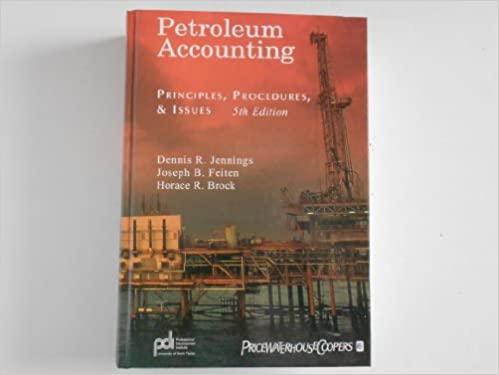Question
Need help in following 4 accounting Mcqs questions. Question No. 1: 1-If something unusual happens between accounting period ends (period 1 and period 2), such
Need help in following 4 accounting Mcqs questions. Question No. 1: 1-If something unusual happens between accounting period ends (period 1 and period 2), such as a fire, what is the implication on accounting for ending inventory at the end of the second period? a-We can likely estimate ending inventory using the LCM inventory valuation method. b-We can use the formula (SP - C)/SP = GP % to estimate ending inventory for period 2. c-GAAP does not allow ending inventory estimation. d-We will need to restate ending inventory for period 1 in addition to estimating ending inventory for period 2. e-We cannot calculate ending inventory for period 2 for the balance sheet until we recover the lost information from the fire.
Question No. 2: Use the following information to answer questions (Round to 2 decimal places):
The following information has been extracted from the records of Due North Sales (DNS) Co.: January 1 Beginning Inventory 550 units @ $26 each
January 9 Bought 1,000 units @ $28 each
January 15 Sold 1,200 units @ $40 each
January 25 Bought 750 units @ $30 each
If Due North Sales (DNS) uses the Weighted Average cost flow assumption, under a perpetual method, the ending inventory value at January 31st is (Round to 2 decimal places): a-$31,600 b-$30,987 c-$32,054 d-$32,300 e-None of the other alternatives are correct
Question No. 3: The Deluxe Company sells toothbrushes. The following information has been extracted from the records of Deluxe.
Jan 1: Beginning inventory = 10,000 units @ $2 each Jan 10: Buy 10,000 units @ $3 Jan 15: Sell 5000 units @ $5 Jan 30: Buy 4000 units @$4
If Deluxe uses the FIFO cost flow assumption and the perpetual method for inventory, the cost of goods sold for January, is a-$10,000 b-$15,000 c-$25,000 d-$20,000 e-None of the above
Question No. 4: Western Company normally makes the journal entry for a purchase of inventory and recognition of the payable on receipt of a vendor invoice. On December 31 (year end) it receives an invoice for $1,000 from Far East Ltd. and records the purchase. However, the incoming shipment is actually still in transit (in mid Pacific) at year end and the sales terms were FOB destination. Western takes a physical count of inventory at the end of year as standard procedure. Western: a-choices a, b and c all represent correct statements b-does not legally own the goods on December 31 c-choices a, b and c all represent incorrect statements d-should reverse the purchase entry to correct the error e-should catch the error when it compares the count to the records (the book to physical adjustment)
Note: (According to chegg policy only first 4 questions should be solve. By flowing Chegg policy I post only 4 questions which needs to be solved).
Step by Step Solution
There are 3 Steps involved in it
Step: 1

Get Instant Access to Expert-Tailored Solutions
See step-by-step solutions with expert insights and AI powered tools for academic success
Step: 2

Step: 3

Ace Your Homework with AI
Get the answers you need in no time with our AI-driven, step-by-step assistance
Get Started


